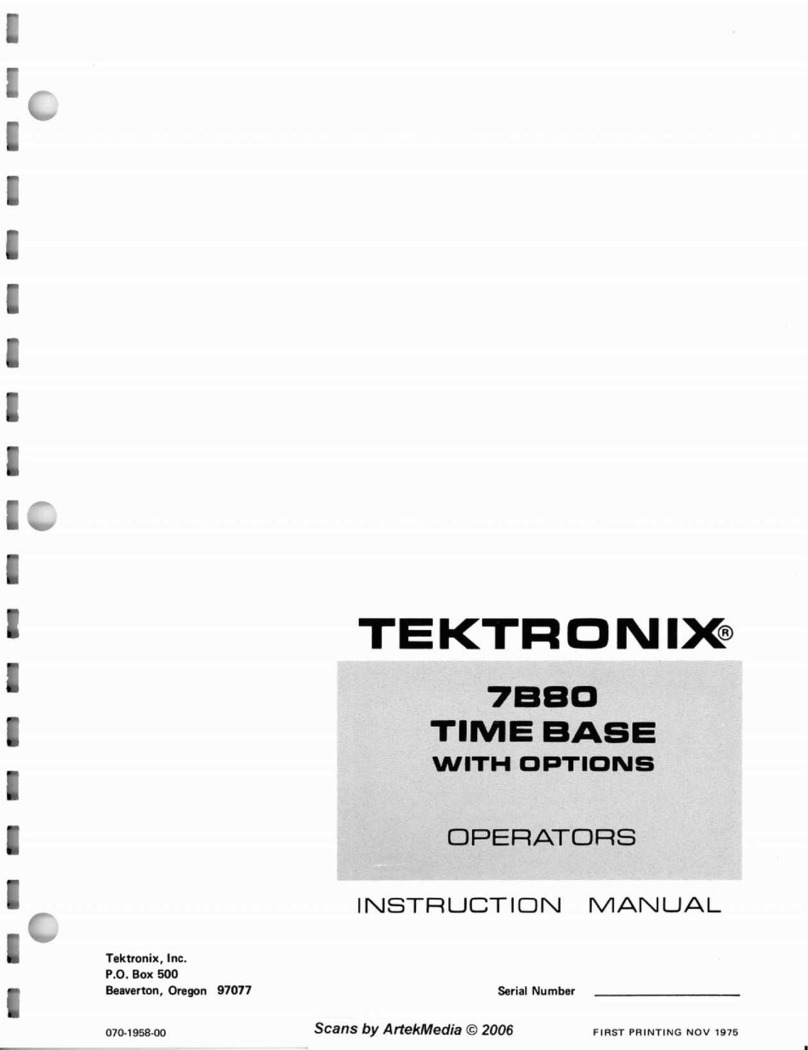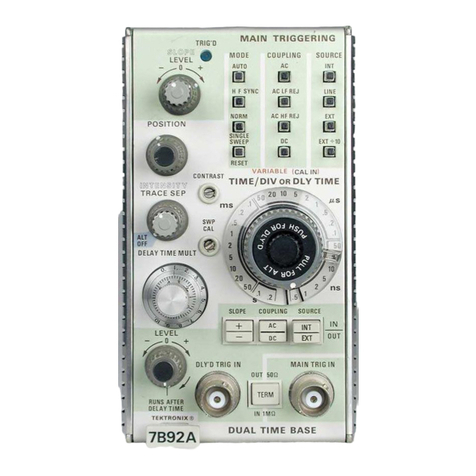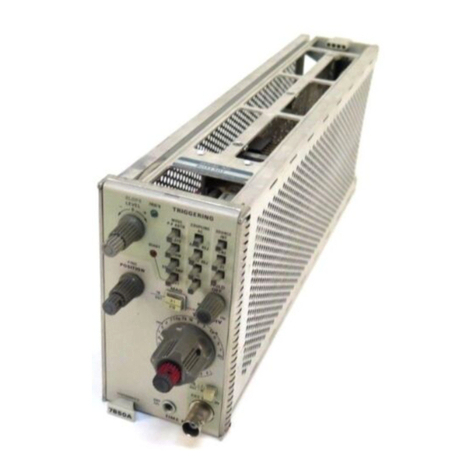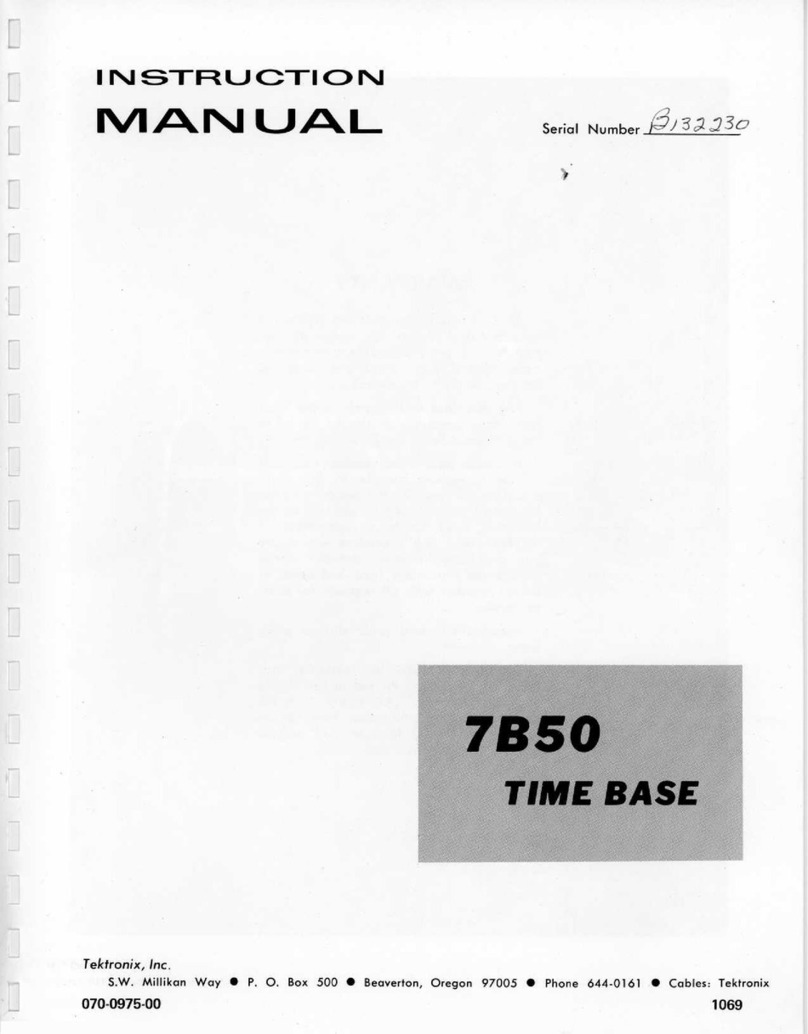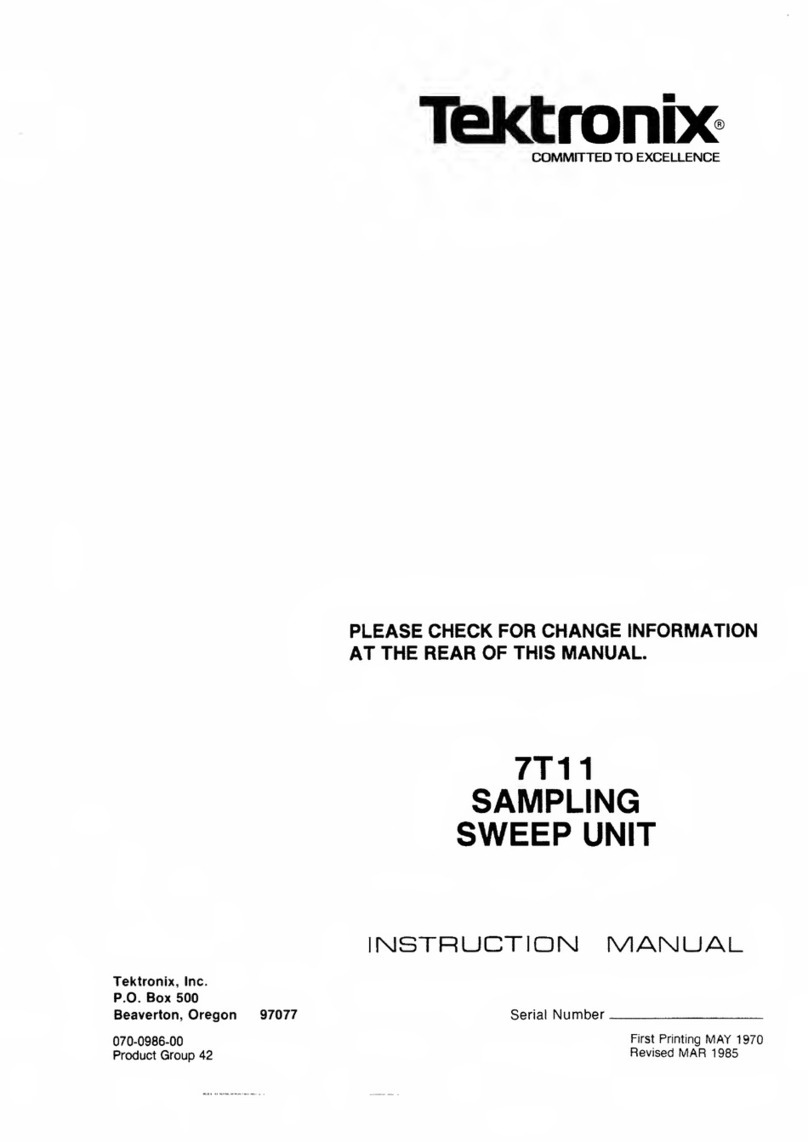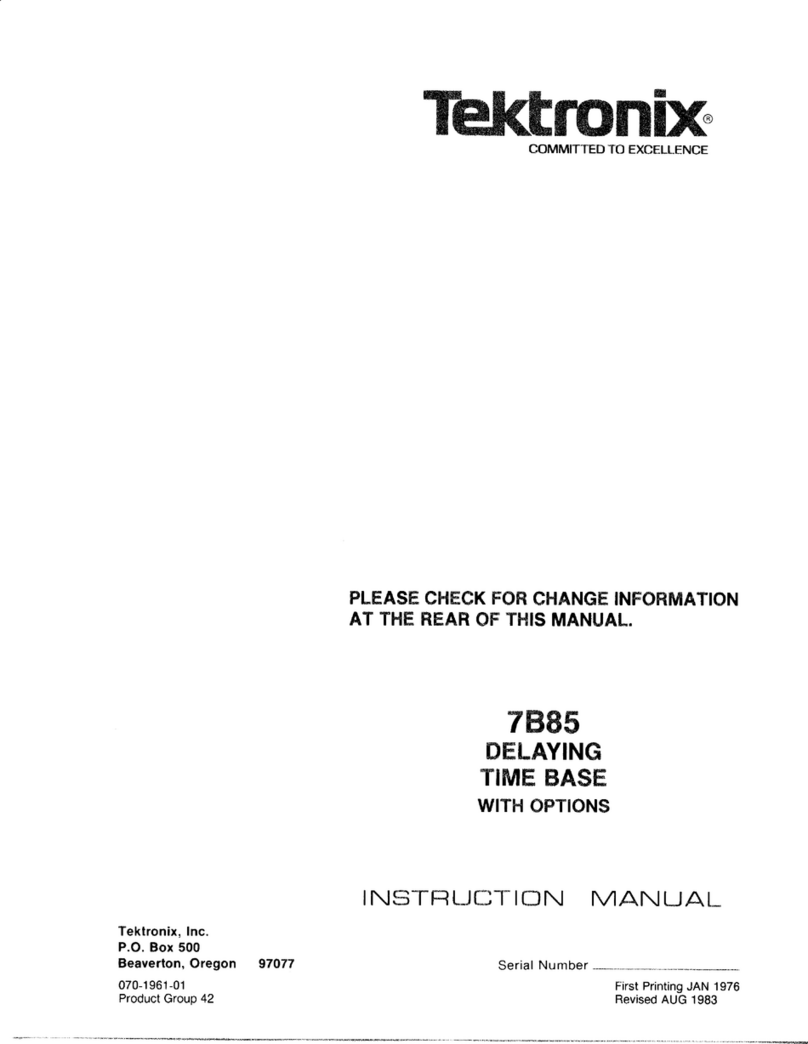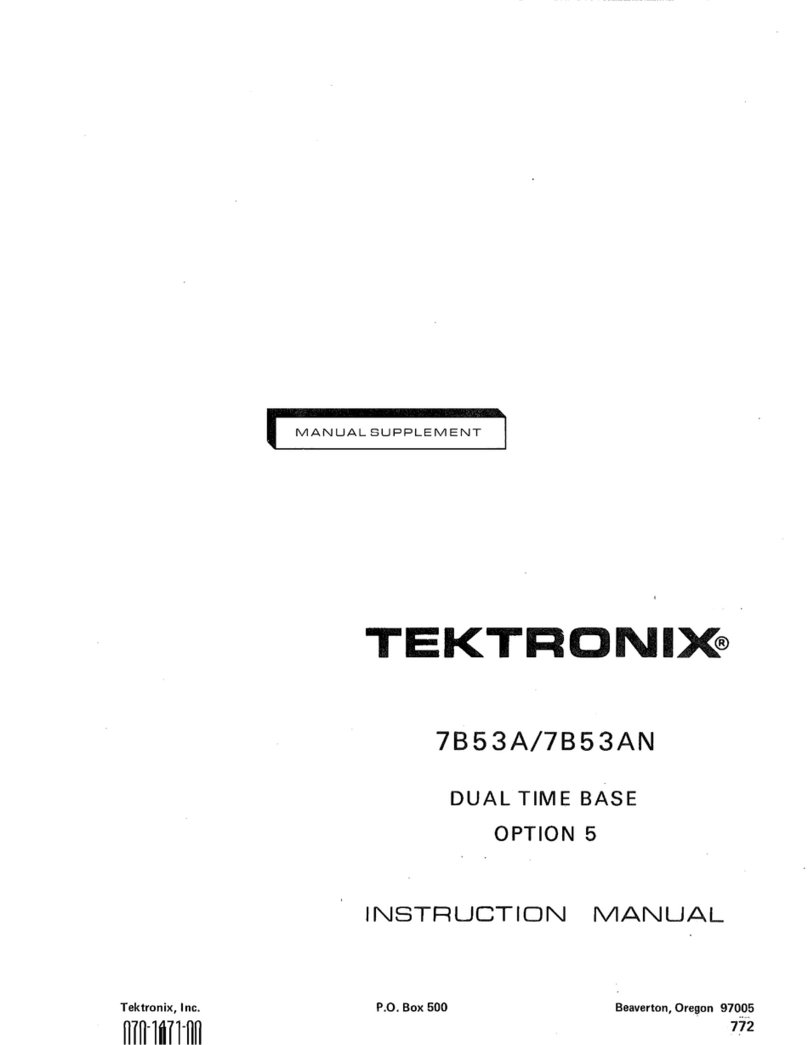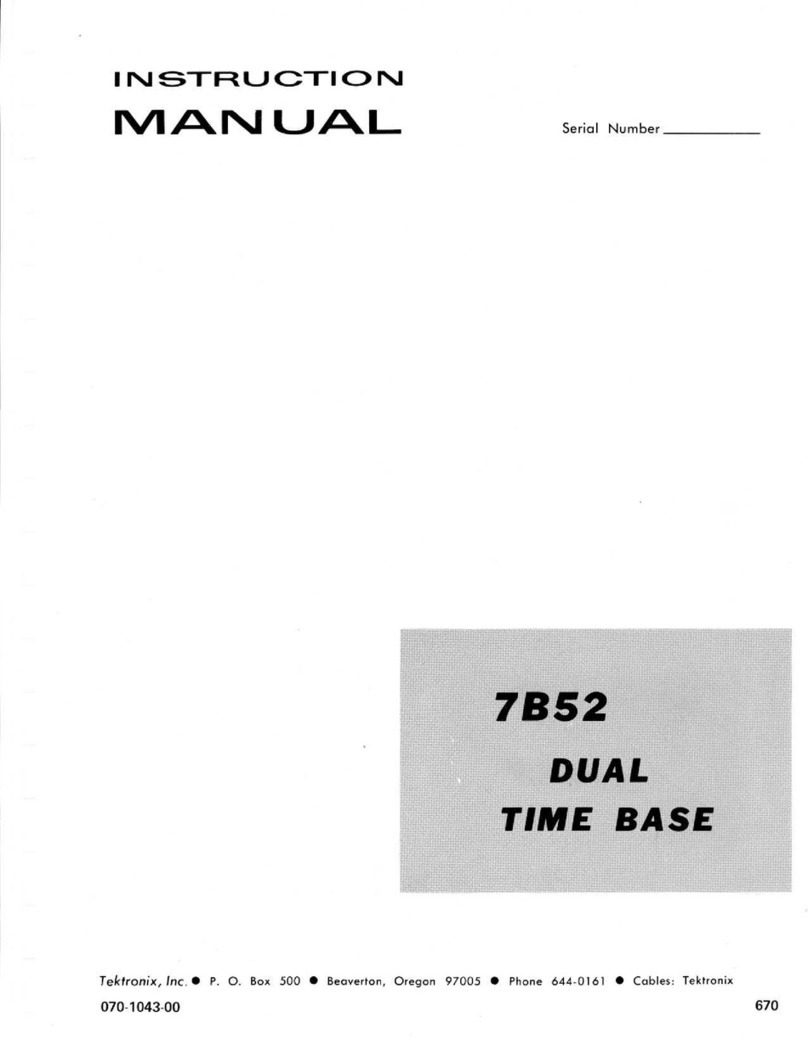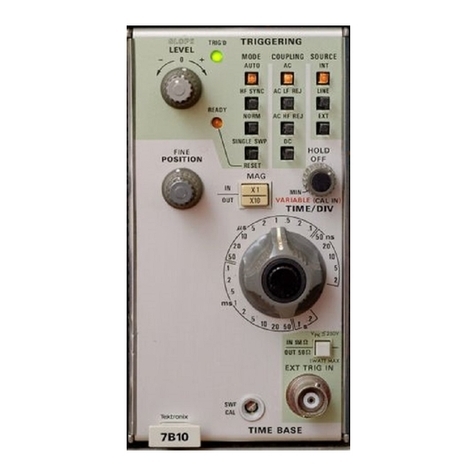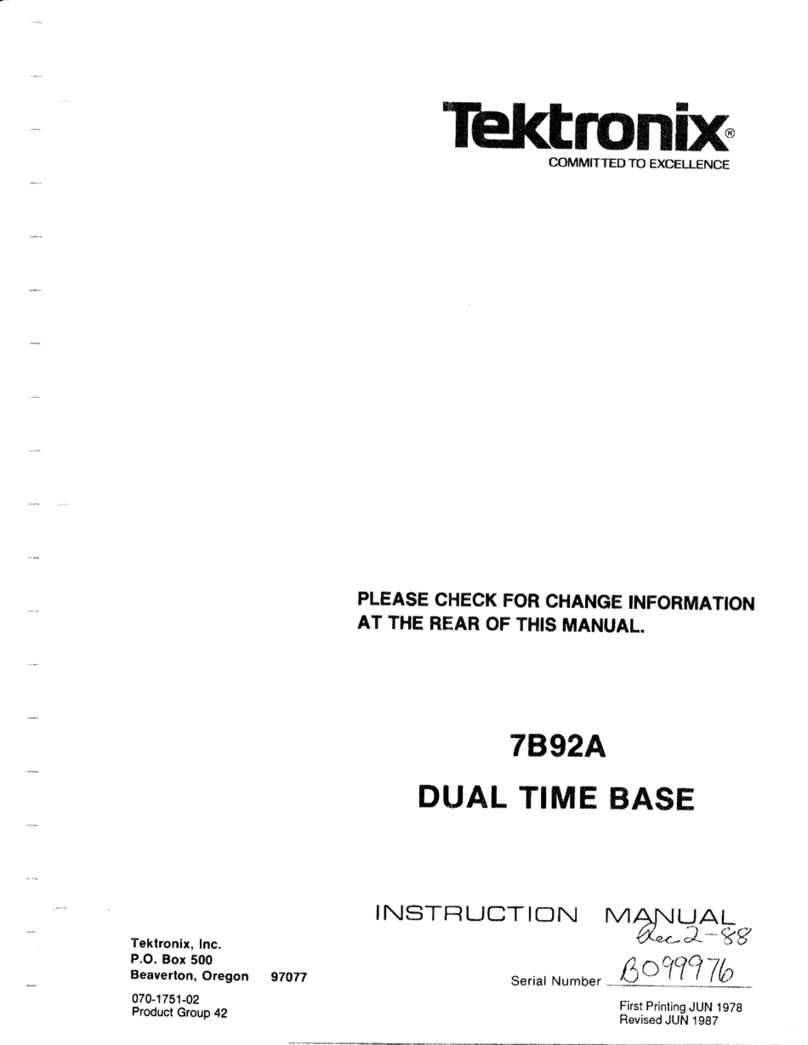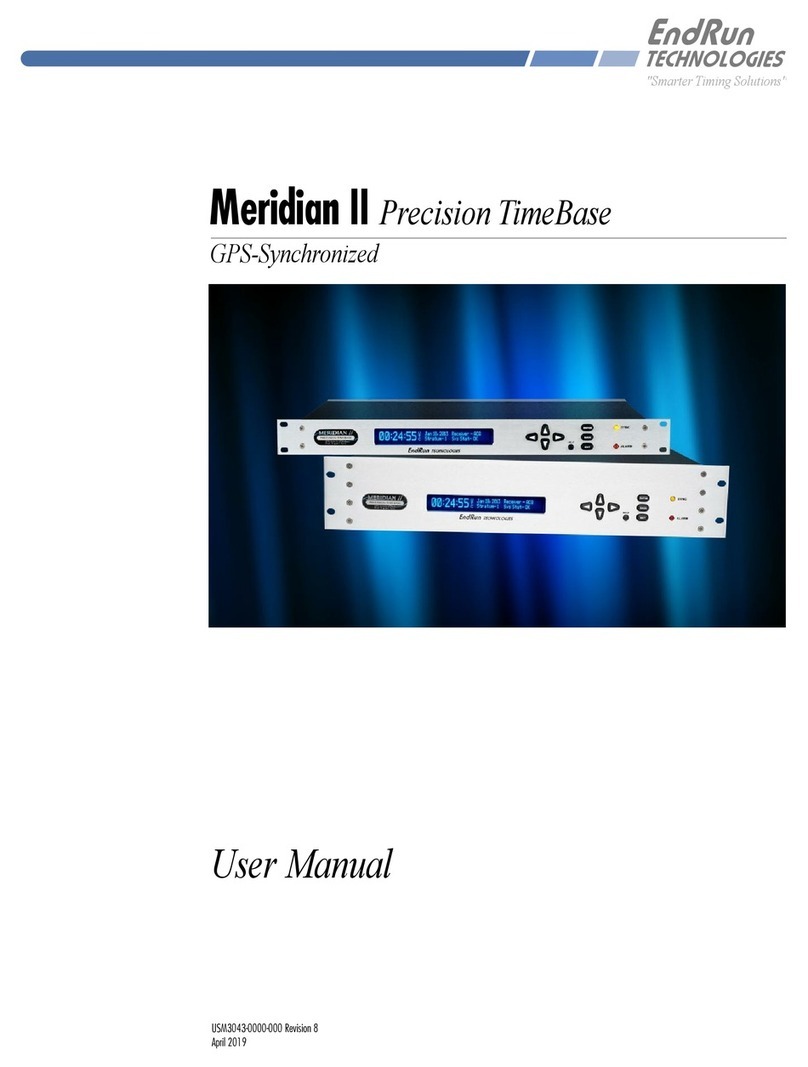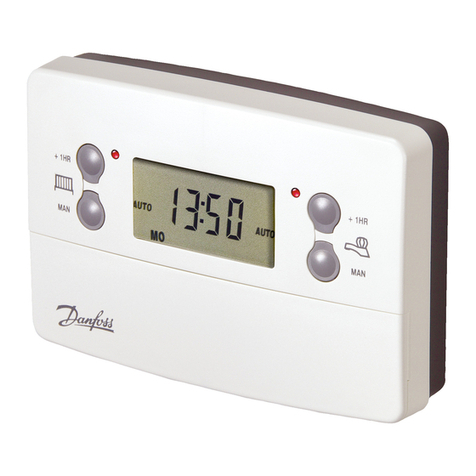Section 1—7B80
OPERATING INSTRUCTIONS
The 7B80 Time-Base unit operates with aTektronix 7700-, 7800-, and 7900-series oscilloscope mainframes and a7A-series
amplifier unit to form acomplete oscilloscope system. This section describes the operation of the front-panel controls and
connectors, provides general operating information, afunctional check procedure, and basic applications for this instrument.
INSTALLATION
The time-base unit is designed to operate in the horizontal
plug-in compartment of the mainframe. This instrument
can also be installed in avertical plug-in compartment to
provide avertical sweep on the crt. However, when used in
this manner, there are no internal triggering or retrace
blanking provisions, and the unit may not meet the specifi-
cations given in Section 2.
To install the unit in aplug-in compartment, push it in until
it fits firmly into the compartment. The front panel of the
unit should be flush with the front panel of the mainframe.
Even though the gain of the mainframe is standardized, the
sweep calibration of the unit should be checked when in-
stalled. The procedure for checking the unit is given under
Sweep Functions in the Functional Check procedure in this
section.
To remove the unit, pull the release latch (see Figure 1-1
)
to disengage the unit from the mainframe, and pull it out of
the plug-in compartment.
CONTROLS, CONNECTORS, AND INDICATORS
All controls, connectors, and indicators required for the
operation of the time-base unit are located on the front
panel. Figure 1-2 shows and provides abrief description of
all front-panel controls, connectors, and indicators. More
detailed information is given in the General Operating
Instructions.
FUNCTIONAL CHECK
The following procedures are provided for checking basic
instrument functions. Refer to the description of the con-
trols, connectors, and indicators while performing this pro-
cedure. If performing the functional check procedure
reveals amalfunction or possible improper adjustment, first
check the operation of the associated plug-in units, then re-
fer to the instruction manual for maintenance and adjust-
ment procedures.
Setup Procedure
1
.
Install the time-base unit being checked in the Ahori-
zontal compartment of the mainframe.
2.
Install an amplifier plug-in unit in avertical compart-
ment.
3.
Set the time-base unit controls as follows:
SLOPE (+)
MODE P-P AUTO
COUPLING AC
SOURCE INT
POSITION Midrange
TIME/DIV 1ms
VARIABLE Calibrated (Pushed in
(CAL IN)
HOLD OFF MIN (fully counter-
MAG clockwise)
XI (pushed in)
4.
Turn on the mainframe and allow at least 20 minutes
warmup.
Fig. 1-1. Location of release latch.

